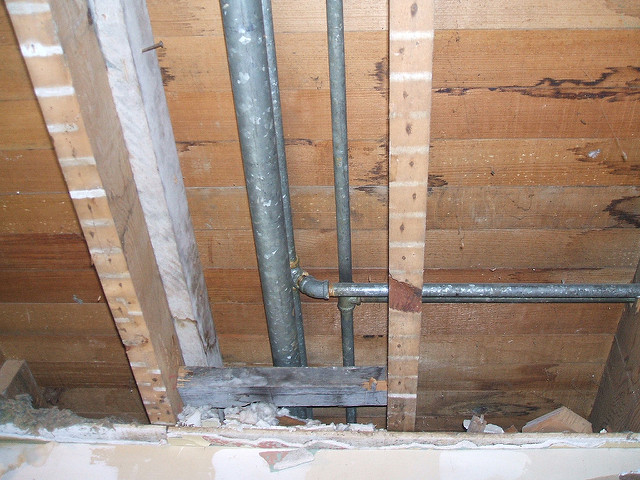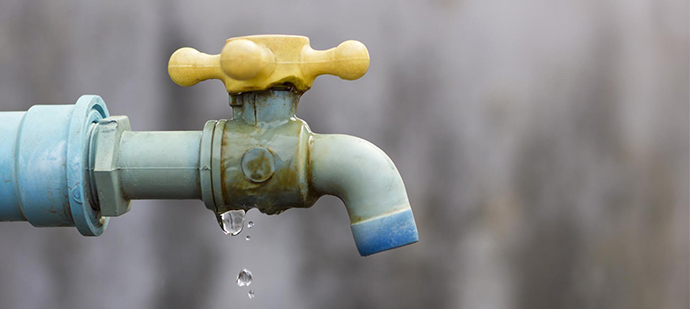What are your opinions on Detecting hidden plumbing leaks?

Early detection of dripping water lines can minimize a potential disaster. Aside from conserving you cash, it will decrease the stress and frustration. The moment you locate a leakage, calling your plumber for repair work is the best remedy. Some little water leaks might not be noticeable. Below are some hacks that aid if you can not discover it with your naked eyes.
1. Check Out the Water Meter
Every home has a water meter. Inspecting it is a surefire way that aids you find leaks. For starters, shut off all the water sources. Ensure nobody will certainly flush, utilize the tap, shower, run the cleaning equipment or dishwashing machine. From there, go to the meter and also watch if it will certainly transform. Considering that no one is using it, there must be no motions. If it relocates, that shows a fast-moving leakage. Similarly, if you discover no changes, wait an hour or two as well as check back again. This implies you might have a slow leak that could also be underground.
2. Inspect Water Intake
If you find unexpected changes, in spite of your usage being the same, it means that you have leakages in your plumbing system. A sudden spike in your bill shows a fast-moving leakage.
On the other hand, a consistent increase monthly, despite the same practices, reveals you have a slow-moving leakage that's also gradually escalating. Call a plumber to completely inspect your residential property, particularly if you really feel a cozy area on your floor with piping underneath.
3. Do a Food Coloring Test
When it comes to water usage, 30% comes from bathrooms. If the shade in some way infiltrates your bowl during that time without flushing, there's a leak in between the container and dish.
4. Asses Outside Lines
Do not neglect to inspect your outside water lines as well. Should water permeate out of the connection, you have a loose rubber gasket. One small leakage can squander lots of water and also increase your water costs.
5. Examine the scenario as well as evaluate
House owners should make it a habit to check under the sink counters as well as even inside cupboards for any kind of bad odor or mold and mildew development. These 2 warnings suggest a leak so timely attention is required. Doing routine assessments, even bi-annually, can conserve you from a major trouble.
If you recognize your house is already old, keep a watchful eye on your heating units, tubes, pipes and so on. Check for discolorations and also damaging as the majority of devices and also pipelines have a life expectancy. They will additionally naturally weaken as a result of wear and tear. Do not wait for it to intensify if you suspect dripping water lines in your plumbing system. Call a specialist plumber right away so you don't wind up with a horrible mess in your home.
Early detection of leaking water lines can reduce a prospective calamity. Some little water leakages may not be visible. Inspecting it is a guaranteed means that assists you discover leakages. One tiny leakage can lose lots of water and increase your water bill.
If you believe leaking water lines in your plumbing system, don't wait for it to escalate.
WARNING SIGNS OF WATER LEAKAGE BEHIND THE WALL
PERSISTENT MUSTY ODORS
As water slowly drips from a leaky pipe inside the wall, flooring and sheetrock stay damp and develop an odor similar to wet cardboard. It generates a musty smell that can help you find hidden leaks.
MOLD IN UNUSUAL AREAS
Mold usually grows in wet areas like kitchens, baths and laundry rooms. If you spot the stuff on walls or baseboards in other rooms of the house, it’s a good indicator of undetected water leaks.
STAINS THAT GROW
When mold thrives around a leaky pipe, it sometimes takes hold on the inside surface of the affected wall. A growing stain on otherwise clean sheetrock is often your sign of a hidden plumbing problem.
PEELING OR BUBBLING WALLPAPER / PAINT
This clue is easy to miss in rooms that don’t get much use. When you see wallpaper separating along seams or paint bubbling or flaking off the wall, blame sheetrock that stays wet because of an undetected leak.
BUCKLED CEILINGS AND STAINED FLOORS
If ceilings or floors in bathrooms, kitchens or laundry areas develop structural problems, don’t rule out constant damp inside the walls. Wet sheetrock can affect adjacent framing, flooring and ceilings.
https://www.servicemasterbyzaba.com/blog/how-to-detect-water-leakage-in-walls/

Do you appreciate reading about Locating water leaks? Create a comment directly below. We will be glad to hear your opinions about this blog entry. Hoping to see you back again soon. Do you know anybody else who is fascinated about the subject? Please feel free to share it. Thank you so much for taking the time to read it.
Comments on “Guide To Water Leak Detection At Home”